Higher classification Ambloplites | Phylum Chordata Scientific name Ambloplites ariommus Rank Species | |
 | ||
Similar Ozark bass, Ambloplites, Warmouth, Redspotted sunfish, Centrarchidae | ||
Shadow bass bonus fish
The shadow bass (Ambloplites ariommus) is a species of freshwater fish in the sunfish family (Centrarchidae) of order Perciformes. It is native to Mississippi, Missouri, Arkansas, Louisiana, and Georgia.
Contents

A. ariommus reaches a maximum recorded overall length of 30 cm (12 in) and a maximum recorded weight of 820 g (1.8 lb).
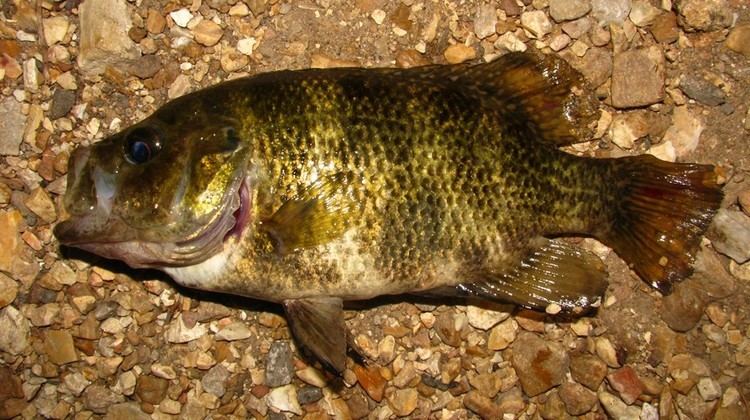
The shadow bass is a member of the centrarchids or sunfish family and is closely related to the rock bass Ambloplites rupestris along with one more related species occurring naturally. The shadow bass is native to the southeastern United States and is most common in Florida, Georgia, Louisiana, Mississippi, Alabama, and two isolated populations in Arkansas and Missouri. It inhabits small to medium-sized rivers and streams with permanent water flow in cool water temperatures similar to smallmouth bass Microtperus dolomieu habitat. Management of the shadow bass was not conducted till the 1980s and still much management being done on shadow bass since most individuals value them below smallmouth bass, but with protection of pools and riffles with vegetated or bushy cover with substrates of gravel, mud, and sand.
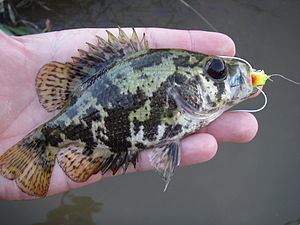
Geographic distribution
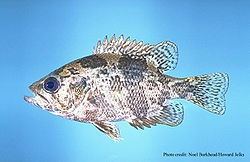
The shadow bass' native range includes the southeastern United States from the Apalchicola River drainage in Georgia to the lower Mississippi basin in Louisiana. The two isolated populations in the St. Francis, Black Arkansas Red, and upper Ouachita River drainages in Missouri and Arkansas in the Ozark regions. In Tennessee, the shadow bass can be found in most drainages south of the Tennessee River. Other river drainages that shadow bass inhabit are Blackwater and Chattahoochee Rivers in southern Georgia and northern Florida. The apparent absence of shadow bass in Black Belt streams is probably the result of low stream flow and poor water-quality conditions during the late summer when temperatures are high. Channelization is a possible factor in the distribution of the shadow bass in Mississippi River systems, but Mareska et al. 2000. proved no difference in the distribution of shadow bass.
Ecology
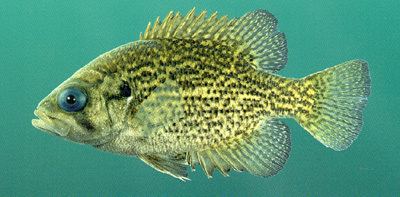
The shadow bass is a freshwater fish that inhabits a climate range of 38 to 29°N in the United States. It prefers slow-flowing water over substrates of silt-free mud, sand, gravel, and pebbles. Brushy and vegetated pools are preferred microhabitat in most streams. Undercut banks and woody debris in small to medium-sized rivers and streams are also preferred habitat. The quantitative diet of shadow bass consists mostly of small invertebrates, mainly crayfish order Decapoda when less than three inches; after three inches, they can begin feeding on small fish species such as darters, madtoms, and minnows. The main predator and competitor of the shadow bass is the smallmouth bass which inhabits the same microhabitat Research was conducted by Walsh and Harris in 2004 on the introduction of rainbow trout Oncorhynchus mykiss in shadow bass habitat to measure competition between the species, the data showed no effect on shadow bass populations. Factors by humans that might attribute to population decline of the shadow bass channelization, sedimentation from logging, and habitat encroachment.
Life history
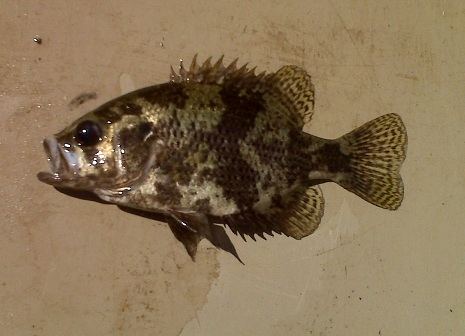
Not much research has been done on the life history of the shadow bass, so reproductive age, clutch size, an lifespan information is lacking. The shadow bass, being a sunfish, builds circular nest in the spring during the breeding season. The male does the nest construction, the female's only obligation is to pick a suitable male's nest and lay her eggs; after that she departs. The male bass watches over the eggs till they hatch three to five days later. The nests are often colonial, meaning several nests are found in one area. The preferred nesting sites are sandy pools with bushy vegetation. The world record weighed 1 lb 13 oz, and was caught in Arkansas. One trait of the shadow bass is its ability to change color to match its substrate background.
Current management
Through its range even for the two isolated populations, the shadow bass is not listed as being in any danger, and the shadow bass is federally listed as G5 secure. Current management for the shadow bass in the rivers in Mississippi was to protects pools and prevent sediment pollution in areas of shadow bass populations. In most places, shadow bass are not considered a game fish and receive little management attention. In Missouri, however, where shadow bass has a demand in the game fish market, biologists are conducting population studies using mark and recapture methods and information for anglers to provide data to determine what, if any, angling restrictions need to apply to shadow bass fishing.
